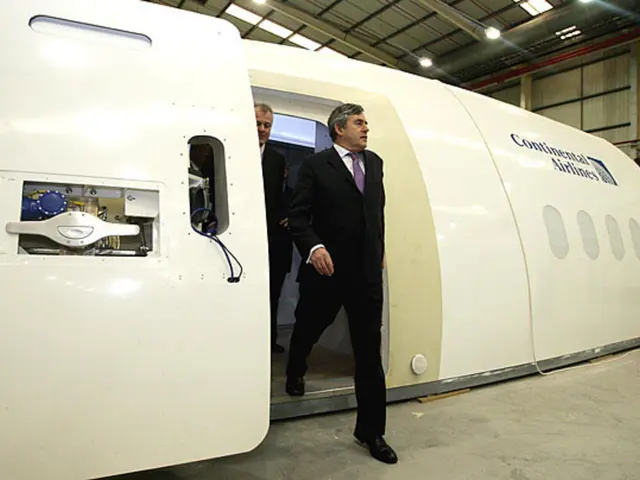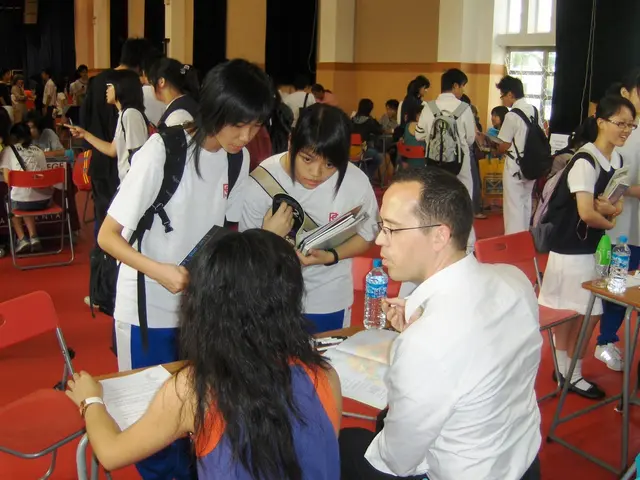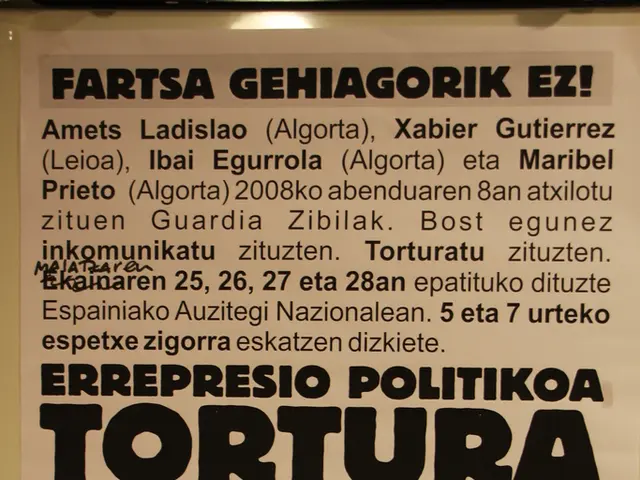A Chronicle of Struggle: The One-Year Museum of Forced Labour in Nazi Germany - The Weimar Edition
Forced Labor Exhibition: A Year's Worth of Compulsory Work Displayed at Zwangsarbeit Museum - Exploring the exhibits: A museum's worth of art and history, housed under one roof, for a full year's worth of visits.
With approximately 1,000 visitors each month and regular events, the Museum of Forced Labour under National Socialism in Weimar is gaining traction, according to spokesperson Dorothee Schlüter.School groups and adult groups are among the visitors, making it a hub for educational tours.
This museum stands as a beacon for former forced labourers and their descendants, created as a sanctuary for them, Schlüter explains. It serves as a reminder of their tragic past.
Millions of untold tales
Museum director Daniel Logemann underlines, "The heinous acts of Nazi tyranny during World War II have seeped into millions of family histories spread across Europe." The question "What links this history to me?" continues to be profound, Logemann states.He believes it can lead to a mutual understanding across all differences, fostering empathy and togetherness.
The museum is forming closer collaborations with other Weimar institutions, with the Kunstfest Weimar 2025 featuring a video installation from the museum.Furthermore, plans extend to 2028, encompassing rotating exhibitions, art installations, cultural events, and conferences.Expectedly, a new rotating exhibition in September will focus on Soviet prisoners of war during World War II.
An educational site in a former oppressor's domain
Part of the Buchenwald and Mittelbau-Dora Memorial Foundation, the museum is the first to present the tale of Nazi forced labour on a pan-European scale.It is situated in a former so-called oppressor's site: the building of the only Gauforum in Germany that was nearly completed during Nazi rule.
This construction was intended to be the headquarters for Gauleiter Fritz Sauckel, who was appointed "General Plenipotentiary for Labor Mobilization" in 1942. Under Sauckel's command, millions were forced into labor.It is estimated that approximately 20-26 million people were coerced to work in the occupied territories and in the German Reich during World War II.
Commemorative events for the Liberation Day
In honour of the Liberation Day, the museum has arranged special events, including a film night and a reading accompanied by dance and music, which will also be presented on May 10.Ute Delimat from Göttingen will deliver a text about her mother Wiktoria, who was abducted from her Polish home at the tender age of 13 for forced labour in 1940.
- Forced Labour
- Weimar
- National Socialism
- Sanctuary
- World War II
- Tomorrow
- Atrocities
- Europe
- The Museum of Forced Labour under National Socialism in Weimar, serving as a sanctuary for former forced laborers and their descendants, aims to educate visitors about the atrocities committed during World War II, becoming an essential educational site in a former oppressor's domain.
- As part of commemorative events for the Liberation Day, the museum is hosting a film night and a reading accompanied by dance and music, featuring a text about Ute Delimat's mother Wiktoria, who was abducted for forced labor in 1940, reinforcing the museum's mission to connect personal stories with European history, promoting empathy and learning.








